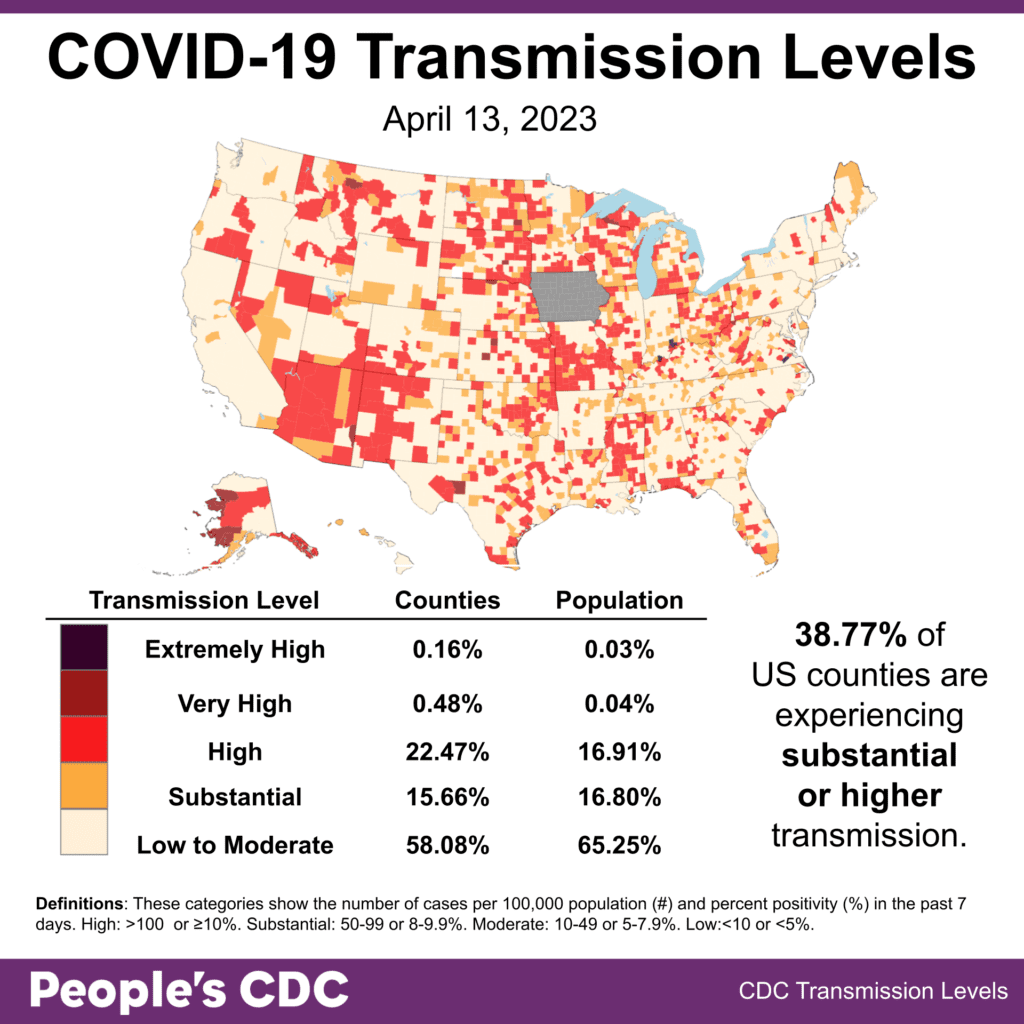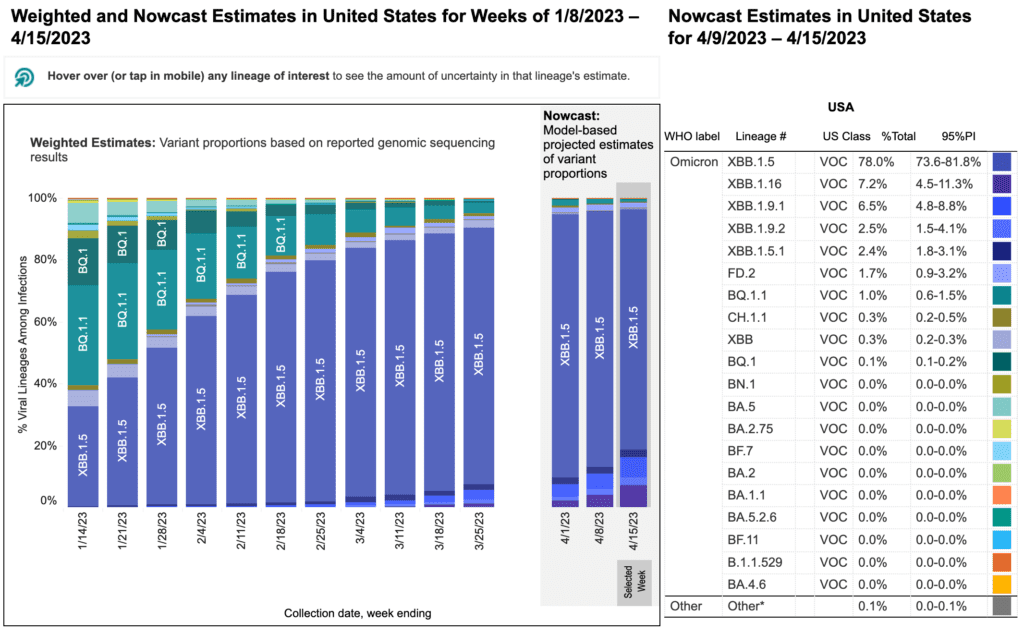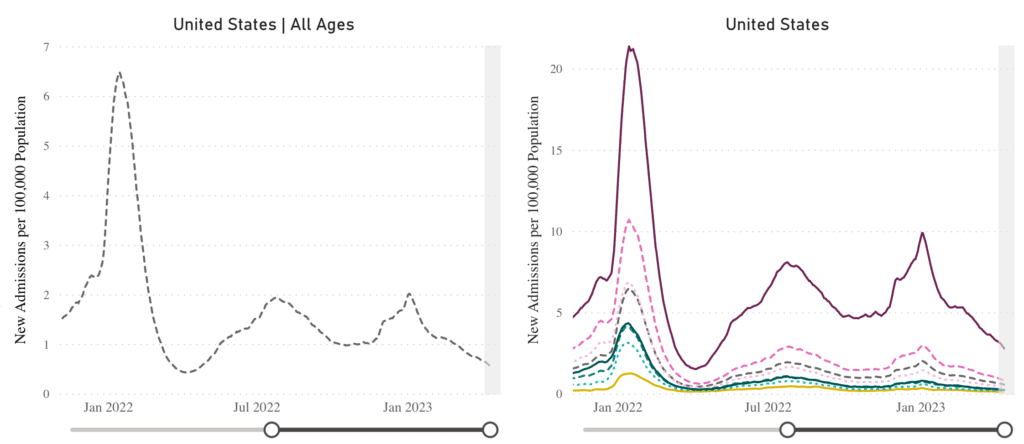The Weather: As of April 13, about 39% of reporting US counties are experiencing substantial or higher COVID transmission based on available data. Iowa (shown in gray) no longer reports COVID data to the CDC as of April 1, 2023.

On Variants: XBB.1.5 (Kraken) remains the most prominent variant in the US, representing 78% of cases as of 4/15/2023, a slight decrease from last week. XBB.1.16 (Arcturus) is now designated dark purple on the CDC’s variant proportion graph and is the second most prevalent variant, representing 7.2% of cases, showing a rapid increase over the last few weeks. XBB.1.9.1 (Hyperion) shows a slight increase to 6.5% as the third most prevalent variant.

Wastewater Monitoring: National wastewater data continues to show a plateau to slight decline on average, with the Midwest, Northeast, and South mirroring that trend. The West region shows a slight increase from April 5 to April 12. Use this Action Network template to write the White House and your representatives to support increased funding and growth of wastewater surveillance.

Hospitalizations: Hospitalizations continue on a slight downward trend. The national average as of April 12, 2023, was 0.56 new admissions per 100,000 population, and the 70 years and older age group hospitalization rate was 2.78 per 100,000 population.

Share our campaigns and resources to support healthcare masking and protect patients, healthcare workers, and communities.
Deaths: For the reporting week ending April 12, 2023, 1,327 Americans died of COVID. Over 1,128,404 Americans have died from COVID since the beginning of the pandemic.
External Review: In the face of mounting political and corporate pressure to return to unsafe pre-pandemic activities despite the growing death toll and millions affected by long COVID, the People’s CDC External Review, titled “Too Many Deaths, Too Many Left Behind,” calls on the CDC to implement evidence-based and ethical public health approaches that protect people. Please share the external review with others who are interested in improving public health.
Notes: 1) The numbers in this report were current as of 4/17/23. The CDC updates data frequently as it receives refreshed information. Today’s numbers may be slightly different from the data here. 2) Check out the links throughout & see our website for more – https://bej.gbh.mybluehost.me